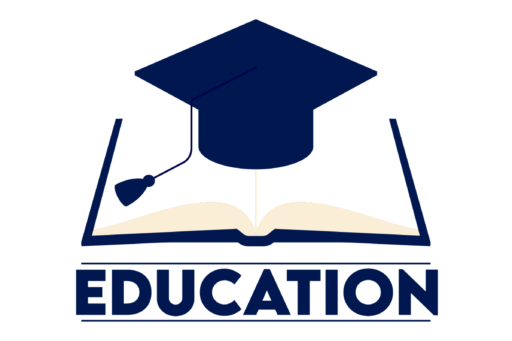How Policies Affect Schools and Students Education policies shape the landscape of schools, guiding the standards, practices, and resources that impact students, teachers, and the wider school community. From curriculum mandates to funding allocations and standardized testing requirements, policies at the local, state, and national levels affect every aspect of school life. Understanding these policies is crucial for educators, parents, and policymakers to create environments that support student learning, well-being, and success. This blog delves into the various ways that policies influence schools and students, the benefits and challenges they bring, and how stakeholders can advocate for improvements.
Types of Education Policies and Their Areas of Influence
Education policies encompass a wide range of regulations and guidelines developed to achieve specific goals within schools. They can generally be divided into categories based on their primary areas of focus, such as:
- Curriculum and Standards Policies: Define what subjects and skills students must learn, often through state or national standards, like the Common Core in the United States.
- Funding and Resource Allocation Policies: Govern how schools receive financial resources, impacting everything from class sizes to technology access.
- Assessment and Accountability Policies: Set the framework for evaluating student achievement, often through standardized tests and assessments.
- Equity and Inclusion Policies: Aim to ensure that all students, regardless of background or ability, receive equal educational opportunities.
- Teacher Policies: Address teacher qualifications, professional development, and performance evaluations, impacting the quality of instruction students receive.
Each type of policy influences school operations, educational quality, and the experiences of students in unique ways.
The Positive Impact of Education Policies on Schools and Students
Well-crafted policies have the power to enhance educational outcomes by setting high standards, ensuring equitable resource distribution, and creating a supportive learning environment for all students.
a. Promoting High Academic Standards
Curriculum and standards policies are designed to provide students with a consistent and high-quality education. For example, in the U.S., the Common Core Standards were developed to create a clear set of expectations for what students should know in subjects like math and English. These standards help teachers focus on essential skills and knowledge, aiming to prepare students for college and career success.
b. Ensuring Equitable Access to Resources
Funding policies aim to allocate resources to schools in a way that helps all students thrive. In many areas, additional funding is allocated to schools with a high percentage of low-income students, helping to close opportunity gaps by providing access to updated facilities, advanced technology, and experienced teachers.
c. Supporting Inclusion and Diversity
Policies that address equity and inclusion aim to support students with diverse needs, including those with disabilities and students from marginalized communities. Policies such as the Individuals with Disabilities Education Act (IDEA) in the U.S. ensure that students with disabilities receive accommodations, special education services, and access to mainstream classrooms whenever possible. These policies foster inclusivity and encourage understanding and empathy among students.
d. Encouraging Teacher Development
Teacher policies that focus on ongoing professional development enable educators to improve their teaching skills and stay updated on the latest educational strategies. This ultimately benefits students, as well-trained teachers are better equipped to deliver effective, engaging instruction. Policies supporting teacher training on mental health awareness, cultural competency, and differentiated instruction can enhance the classroom experience for all students.

Challenges and Criticisms of Education Policies
Despite the positive intentions behind many education policies, there are also challenges and drawbacks that impact schools and students. Some policies may inadvertently place undue pressure on students and teachers or create barriers to innovation.
a. Standardized Testing and Its Consequences
Standardized testing policies have come under scrutiny for their emphasis on test scores as the primary measure of student and school success. High-stakes testing can create a stressful environment for students and teachers, as instruction may become overly focused on test preparation rather than holistic learning. This “teaching to the test” approach can limit creativity and critical thinking in the classroom, potentially stifling students’ curiosity and enjoyment of learning.
b. Inequitable Funding Structures
In many regions, school funding is tied to local property taxes, leading to significant disparities between well-funded and under-resourced schools. Wealthier areas can often provide better facilities, smaller class sizes, and more extracurricular opportunities, while schools in low-income neighborhoods struggle to meet basic needs. Policies that attempt to address these disparities through state and federal funding can help, but they often don’t fully level the playing field, leaving gaps in student experiences and opportunities.
c. Inflexible Curriculum Standards
While curriculum standards aim to ensure consistency, overly rigid policies may limit teachers’ ability to adapt lessons to meet the needs of their students. For instance, a teacher in a diverse classroom may wish to incorporate culturally relevant materials but be restricted by a strict curriculum policy. Additionally, standards that prioritize certain subjects, like math and science, can sometimes overshadow equally valuable subjects, such as the arts and physical education.
d. Barriers to Inclusive Education
While policies promoting inclusion are beneficial, they often lack adequate funding and support. Schools may face challenges in providing the necessary resources, staff training, and accommodations required to create a truly inclusive environment. Without sufficient support, policies like IDEA are difficult to implement effectively, leaving some students without the help they need to succeed.
How Policy Changes Can Improve Educational Outcomes
Recognizing the limitations and challenges of existing policies is the first step toward meaningful reform. Policymakers, educators, parents, and students can work together to advocate for improvements in the following areas:
a. Increasing Funding for Underserved Schools
Equitable funding models that allocate more resources to schools in high-need areas can help ensure that all students have access to quality education. This includes investing in school infrastructure, modern technology, and additional support staff, such as counselors and special education teachers.
b. Reforming Standardized Testing Practices
Re-evaluating the role of standardized testing can reduce stress on students and allow teachers to focus on comprehensive education. Alternative forms of assessment, such as project-based learning and portfolio assessments, can provide a fuller picture of student progress and skills. Policies that emphasize multiple assessment methods rather than a single test can create a more balanced approach to measuring student achievement.
c. Supporting Inclusive Practices
To create genuinely inclusive schools, policies must go beyond mandates and provide resources for training, adaptive equipment, and additional support staff. Inclusive education policies should also include specific goals for reducing achievement gaps and promoting equitable access to extracurricular activities and advanced courses for students with special needs.
d. Encouraging Flexibility and Creativity in Curriculum
Policies that allow teachers more flexibility in adapting curriculum to the unique needs and interests of their students can foster a more engaging and meaningful learning experience. For example, policies that allow for culturally responsive teaching, student-led projects, and hands-on learning experiences enable teachers to connect with students in diverse ways. Flexibility in curriculum policies allows schools to balance core standards with the unique cultural and academic needs of their students.

Empowering Students and Parents through Policy Awareness
Awareness of education policies empowers students and parents to become advocates for positive change. Schools and communities can support this process by organizing informational events, encouraging discussions on policy impacts, and providing resources for families to understand their rights and options. Parent-teacher organizations and student councils can serve as forums for expressing concerns and proposing solutions to improve policies that affect schools and students.
Conclusion: Shaping Policies for a Better Educational Future
Education policies play an essential role in shaping the quality and accessibility of learning experiences in schools. While well-designed policies can promote equity, high standards, and inclusion, poorly implemented or outdated policies can create unnecessary obstacles. For schools to truly support every student’s success, it’s vital to continue re-evaluating and adapting policies based on feedback from educators, students, and families.
By fostering open dialogues and advocating for policies that reflect the real needs of schools and students, we can create educational environments where all students can thrive. Whether addressing funding disparities, promoting teacher training, or revising assessment practices, each policy decision has the power to make a positive impact—leading to a future where education is inclusive, equitable, and effective for all.

